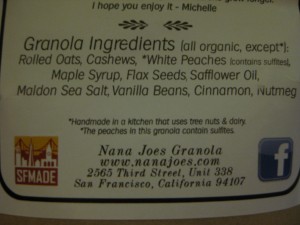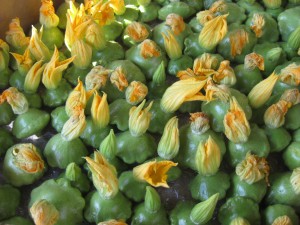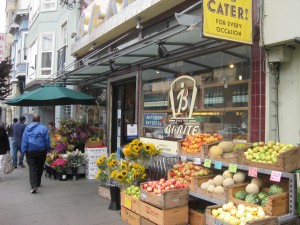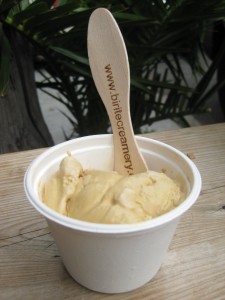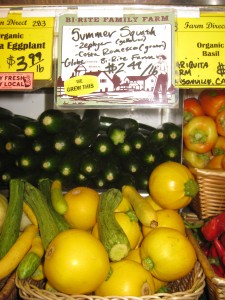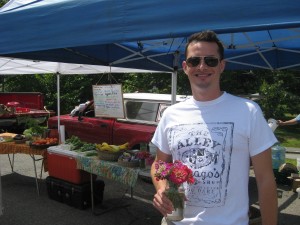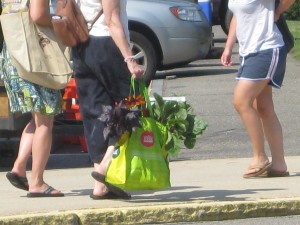 If you are a fan of both farmers’ markets and Smug sightings, you can do no better than the legendary Smug epicenter known as the Portsmouth Farmers’ Market. Smug Scout can think of no better way to spend five hours early on a summer Saturday. And she really means five hours. She arrives at 8 am (or as close to 8 as a reluctant chauffeur will bring her since her own car is in L.A.) and stays till 1 pm. When the market ends, she sadly makes a final run-through to make sure there is no delicacy she has missed and of course to rescue any abandoned produce off the ground. So now you want to have this transporting experience, right? Here is how you need to prepare for your visit.
If you are a fan of both farmers’ markets and Smug sightings, you can do no better than the legendary Smug epicenter known as the Portsmouth Farmers’ Market. Smug Scout can think of no better way to spend five hours early on a summer Saturday. And she really means five hours. She arrives at 8 am (or as close to 8 as a reluctant chauffeur will bring her since her own car is in L.A.) and stays till 1 pm. When the market ends, she sadly makes a final run-through to make sure there is no delicacy she has missed and of course to rescue any abandoned produce off the ground. So now you want to have this transporting experience, right? Here is how you need to prepare for your visit.
What to wear
Women: If you are from a big city, you may not be used to wearing all of these items when you will be out in public and seeing hundreds of people, but do not worry. If you try to wear your black sweaters, Prada shoes, or anything at all deemed fashionable, you will look like a foolish city slicker. You will receive contemptuous looks, and no one will talk to you, though the laconic New Hampshire farmers will reluctantly accept your money. Go with any or all of the below list for maximum camouflaging.
- Shorts, skirts, or lightweight cotton pants with cargo pockets
- Functional flip-flops or sandals (NO Italian thongs! NO delicate straps!)
- L.L. Bean type t-shirts, polos, or tank tops (NO pricey brands! NO European designers!)
- Floppy hat, ideally made of fair-trade cotton or local barnyard straw
- Sunblock (NO other makeup!)
Men: So, men, you will be surprised to hear that your list is almost identical to the women’s list. Skirts with cargo pockets are fine for you, too, but you have to call them “utili-kilts” so you will seem sufficiently–or at least ironically–masculine. You can also wear hip t-shirts with messages or t-shirts with hip messages (Smug Scout does not care to parse that inconsequential difference). You can trade the floppy straw hat for a baseball cap or some Brooklyn hipster headgear if you do not want to look like Huckleberry Finn.
Children under five: Okay, you little gargoyles, Aunt Smug Scout was not about to forget you. Now since you are probably not buying your own clothes yet, you will need to use your best executive negotiating skills to ensure you wear what you want. Do not let Mommy and Daddy put you in that mini Harley t-shirt your crazy ZZ Top uncle got you in Laconia. You prefer American Apparel t-shirts with eco-friendly messages. Tell them you insist on those cute little khakis with cargo pockets. Tell them you have to wear Crocs in two different colors, specifically not coordinated with your outfit, even though you agree with Smug Scout that those are hideously unstylish service wear for gardeners and cooks that have no business in public settings. Finally, throw a tantrum if they do not give you a floppy hat and sunglasses. Remind them you prefer to put on your own Neutrogena SPF 100+ Helioplex360 sunblock. You have both young skin and image to protect.
What to bring
Women and Men: If you are in the upper echelons of Smugness, you will bring a reusable bag made in New England, such as a Sea Bag from Portland, Maine, or anything you purchased at the League of NH Craftsmen. If you are striving for those upper echelons but know you are not there yet, you will bring a Whole Foods tote or some third world woven basket. If you are barely aware of the local expectations, you will bring a flammable “cotton” Hannaford supermarket tote. If you are anti-Smug, you will take a plastic bag everywhere you buy something and wave them around belligerently every time you use your hands to do something.
Other items to bring:
- $100 in small bills per person
- At least two blonde children under five, dressed and accessorized with none of your input or intervention (see above and below)
Children under five: Please make sure Mommy and Daddy know that you need your own reusable bag. You should not have to put your cinnamon cider donuts, artisanal Indian food, and organic curly kale in their bag. Though they refuse to buy you that $180 black Kevlar Sea Bag you have your eye on, tell them you will accept a natural cloth Bull Moose tote. Do not let them try to dump that ratty old Trader Joe’s bag on you. You do not want anyone to think you support that chain’s unseemly use of non-recyclable plastic. You have standards. You are from Portsmouth.
How to get there
Women and Men: Sorry, not many options here. If you must drive, you need to come in a Prius or Subaru Outback. If you prefer a more showy entrance and exit, you need to come on an intentionally rattletrap old bike that has at least two baskets attached. That way, you can make a point of riding down the hill with your flowers and herbs flying in the breeze. (Some of these flowers and herbs will probably escape. Smug Scout does not blame them. She would not want to be transported so carelessly if she were a flower or herb. She knows that if she were a flower or herb, she would not look so fresh after a punishingly windy and public ride through downtown Portsmouth.)
Children under five: If you really have Mommy and Daddy in your thrall, then there is exactly one way you want to show up to the FM, and that is seated regally in your very own Radio Flyer All-Terrain Steel and Wood Wagon. This is your Prius, and you can boast it has better gas mileage than a Prius, because it runs on Daddy’s sweat (and from what you can tell, with no small amount of distaste, there is a surplus of that). Furthermore, if Mommy and Daddy are properly Smug, they have installed a reclaimed wood produce holding box under the seat. But do not stop there. Tell those Smug parents of yours you want a built-in reclaimed glass vase for your flowers.
Stay tuned for the next installment: what to do, buy, and eat when you go to the divinely Smug Portsmouth Farmers’ Market!

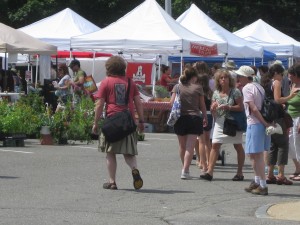
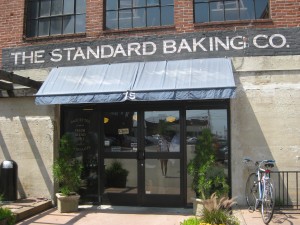 Portland, Maine is one of this country’s most cherished Smug epicenters and as such one of Smug Scout’s favorite places for a vacation. As you would expect, Portland has plenty of Smug businesses where it is possible to spend large amounts of money on the correct things to eat, drink, wear, and showcase in your house. The Standard Baking Co. even sets the gold standard, so to speak, for Smug products in Portland. Let us consider the most obvious Smug factors:
Portland, Maine is one of this country’s most cherished Smug epicenters and as such one of Smug Scout’s favorite places for a vacation. As you would expect, Portland has plenty of Smug businesses where it is possible to spend large amounts of money on the correct things to eat, drink, wear, and showcase in your house. The Standard Baking Co. even sets the gold standard, so to speak, for Smug products in Portland. Let us consider the most obvious Smug factors: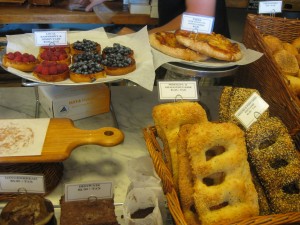
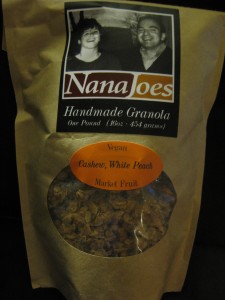 If you must know, Smug Scout loves granola. She eats it every morning she is forced to go to work. She likes it because she can put ingredients (granola, yogurt, and of course local, seasonal, organic fruit) in her German reusable plastic container (yes, made in Germany!) and when she arrives at her desk mix it into a Smug L.A. version of Swiss Bircher Müsli. So she is always looking for appropriately artisanal granola, and when she saw Nana Joes Handmade Granola at the legendary Bi-Rite Market in San Francisco, she had to have it, even though she does not understand the absence of an apostrophe in “Joes.” Let us consider why this granola seemed Smug:
If you must know, Smug Scout loves granola. She eats it every morning she is forced to go to work. She likes it because she can put ingredients (granola, yogurt, and of course local, seasonal, organic fruit) in her German reusable plastic container (yes, made in Germany!) and when she arrives at her desk mix it into a Smug L.A. version of Swiss Bircher Müsli. So she is always looking for appropriately artisanal granola, and when she saw Nana Joes Handmade Granola at the legendary Bi-Rite Market in San Francisco, she had to have it, even though she does not understand the absence of an apostrophe in “Joes.” Let us consider why this granola seemed Smug: